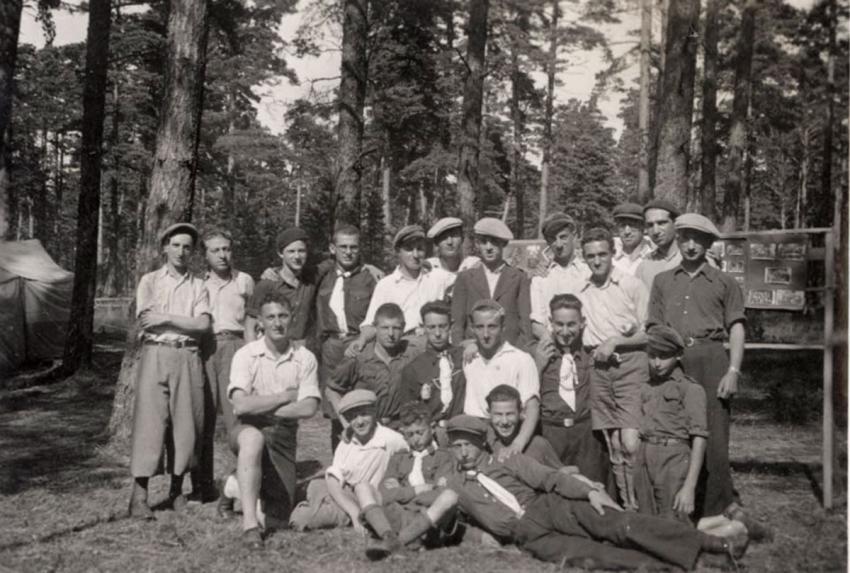Members of the Bnei Akiva youth movement in a camp in Jonava, Lithuania, in August 1938.
On the eve of the Soviet (1940) and German (1941) conquests of Lithuania, approximately 3,000 Jews lived in Jonava, Lithuania. The Jews made up more than half of the town’s population, which was situated close to Kovno. Three Jewish schools functioned in the town: one in Yiddish and two in Hebrew – a secular school of the Tarbut network and one of the religious Yavneh network.
Jonava’s Jewish community was very politically active, possessing many active Zionist parties. It had clubs for most of the Zionist factions, and branches of the various youth movements: Ha-Shomer Ha-Tzair, He-Chalutz Ha-Tzioni, Beitar, Gordonya and others. In Jonava there were many opportunities to learn a trade, and thus many Zionist youth came to the town in order to learn a profession before immigrating to Eretz Israel.
Prior to WWII, in addition to their Zionist activities, many Jews from Jonava immigrated to the United States.
The fate of the Jews of Jonava who remained in the town was that of the Jews of Lithuania – the majority were murdered by shooting, and a small part of the community was deported to the Kovno Ghetto, where they faced the same end as the other Jews of the ghetto: they were murdered either in the concentration camps, in forced labor or on death marches.
Yad Vashem Photo Archives 7142/1







